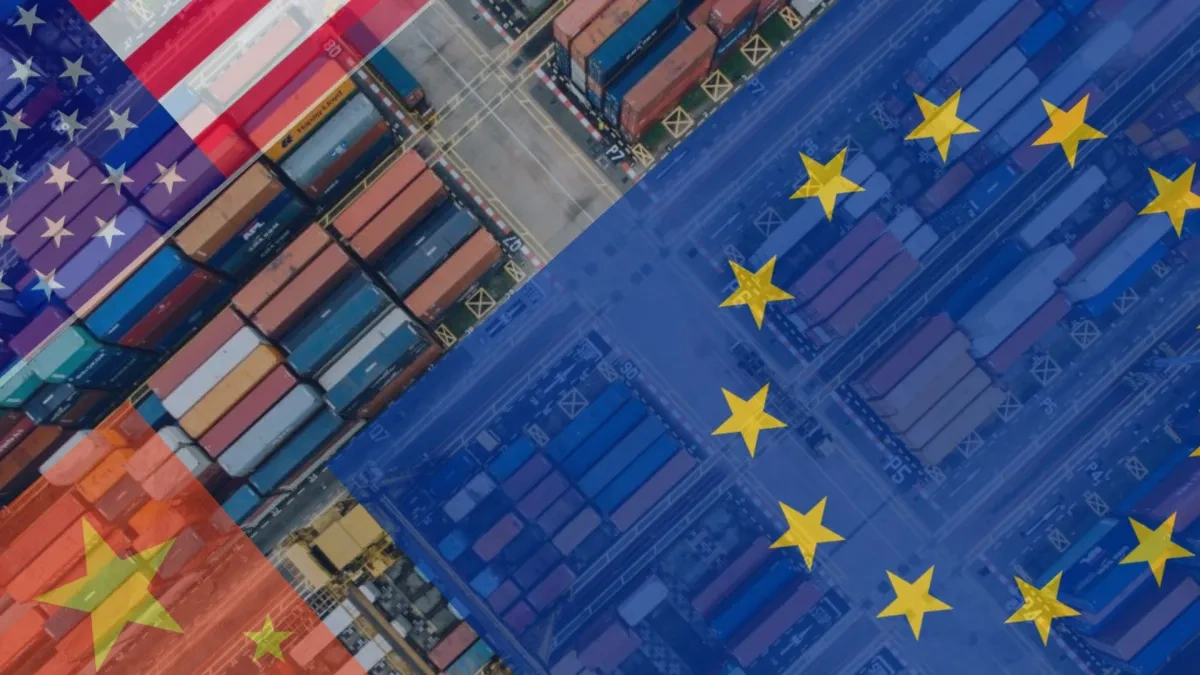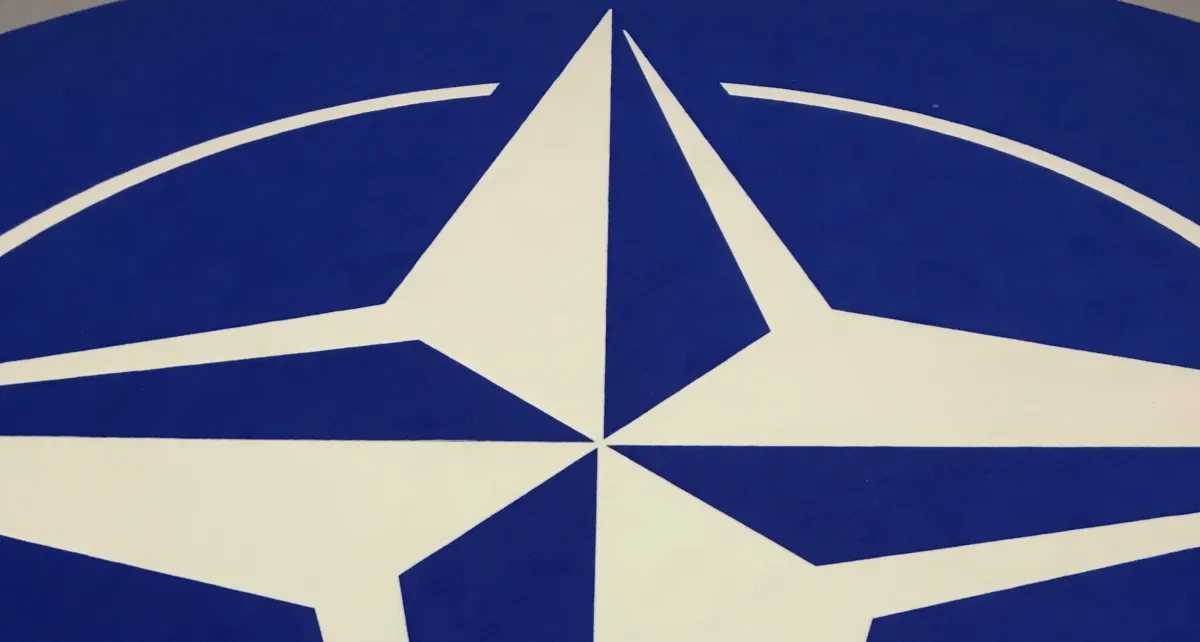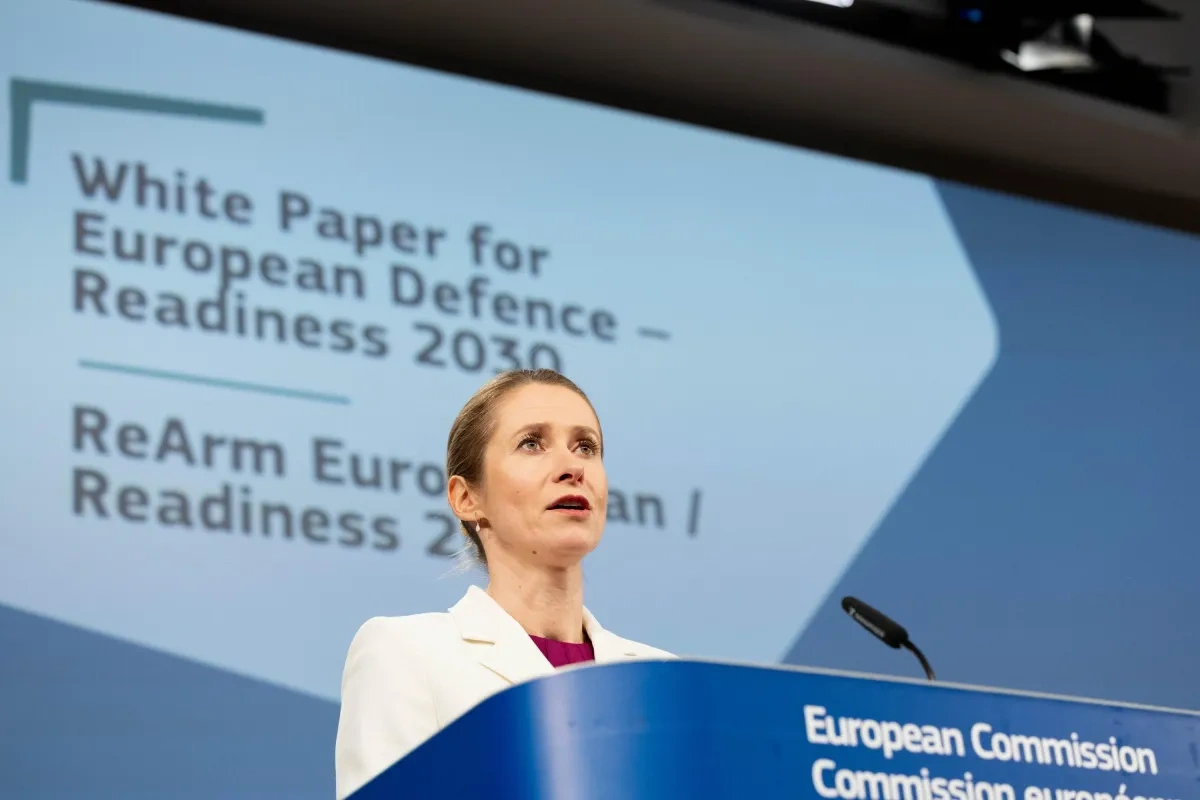
Niall Moran (Dublin City University)
The Trump Presidency spells chaotic times for transatlantic and global trading relations. Uncertainty still reigns despite the US president ‘backing down’ yesterday from his original reciprocal tariff policy by pausing it for 90 days, during which there will ‘only’ be a 10% quasi-universal tariff on US imports. (In 2023 when Trump first mentioned a 10% “ring around the collar” of the US economy, it seemed scarcely imaginable.) In responding to US tariffs, the EU must observe certain fundamental principles – it must defend its long-term interests, while acting in a way that maintains the integrity of the rules-based international trading system.
-
WTO compatibility must be non-negotiable
The EU’s enduring interest is in defending the multilateral trading system. The EU plays by the rules and must stick to its long-held principles ensuring its actions remain unequivocally within the bounds of WTO law in its response to US tariffs.
There are two main elements to this which apply, first, in concluding trade agreements and building alliances in response to these tariffs; and second, in dealing with the US itself.
On trade agreements, the EU must immediately prioritise forging deeper economic arrangements with willing partners. As a starting point, the EU should focus on WTO Members that have demonstrated a commitment to the multilateral system, for example the 26 other Members who have joined the EU-led MPIA – an alternative system of appeal at the WTO launched in 2020 after the US paralysed the WTO’s Appellate Body.
While the EU has trade agreements with many of these countries, progress can be made in building on existing agreements (as seen with the modernised agreement with Mexico), ratifying Mercosur, and concluding negotiations with Australia and the Philippines.
Such agreements can mitigate unilateralism’s disruptions, reinforce cooperation and support for a rules-based trading system. There has been a move towards informal economic partnerships in recent years that are flexible, issue-driven and can be set up quickly without needing Council approval or ratification by Member States. Partnerships like the Indo-Pacific Economic Framework (IPEF) or the EU-US Trade and Technology Council (TTC), though imperfect, are models for forums like this than can promote cooperation and experimentation. IPEF involved negotiations on four pillars including: (1) Trade; (2) Supply Chains; (3) the Clean Economy and 4) Anti-Corruption. While its fatal flaw was that market access was taken off the table by the US, it did reach interesting outcomes in other areas such as its Supply Chain Agreement.
Progress could be built incrementally rather than having a binary outcome of either concluding a fully-fledged trade agreement or not, which would provide a flexible alternative to the standard practice of taking a decade to conclude (or not conclude) a trade agreement.
The EU must also ensure WTO compatibility in its dealings with the US. This should involve challenging US measures at the WTO, as China and Canada have done since ‘Liberation Day’. It may also involve countermeasures, for which there should be a number of (at least potentially) WTO-compatible defences.
If the EU sought to respond immediately, rather than seeking a negotiated outcome under GATT Article XXVIII, a crucial concern with reliance on GATT Article XXI (or XX) is systemic risk. The EU must weigh its options carefully as invoking security exceptions against US tariffs risks undermining the system it is trying to preserve.
The EU’s Anti Coercion Instrument is another potential tool for defending EU interests. It could be used if the US is deemed to have engaged in economic coercion—for instance, by pressuring the EU into changing its trade policies, such as its tariffs on automobiles. The ACI also has the key advantage of speed. While its timelines refer to four months for investigation and six months for decision-making, these are upper bounds. In urgent cases, the EU should act much faster.
In negotiations with the Trump administration, there should be no question of compromising on respect for the rules of the international trading system to try to get a favourable deal for certain EU industries. Deals of this kind, by the EU or other WTO Members, risk destroying the WTO rulebook. Any deal that fails to comply with WTO rules is a Faustian pact, that will ultimately prove destructive.
When dealing with a partner as unpredictable as the Trump administration, it would be doubly defeating to go this route where no such deal may transpire given the range of grievances expressed against the EU, from its policies on VAT to hormone-treated beef. Upholding the rules-based order is not an act of self-sacrifice, it promotes stability, economic growth, and the EU’s reputation as a reliable partner.
What scope is there for a deal with the US?
The EU has proposed a "zero-for-zero" tariff arrangement to eliminate industrial tariffs with the US. President Trump rejected this proposal seeking broader concessions. The WTO compatibility of such an arrangement would depend on its benefits being extended to all WTO Members, it being part of a formal Free Trade Agreement (FTA), or the arrangement receiving a waiver from the WTO membership, which would be unlikely. While the details of this arrangement are not fully clear, there are definitely questions to be answered about its WTO compatibility, particularly as market access appears to be at its core, rather than sustainability or mutual recognition agreements.
A good example of a pragmatic mini trade agreement was the one agreed back in 2020 by former Trade Commissioner Phil Hogan with the US Trade Representative Robert Lighthizer. This covered a small number of tariff lines on lobster and a few other areas aiming to “de-escalate tensions” and improve relations. This opportunity arose when demand for Maine lobsters fell 50% due to Chinese tariffs of 25%.
Importantly though, the tariff reductions were extended to all WTO Members so it observed the Most-Favoured-Nation (MFN) principle and was WTO-consistent.
In contrast, the 2019 US-Japan mini-deal on tariff lines covering 42 farm products and certain industrial goods had a “thin veil of WTO compliance”. The first phase of the US-Japan deal clearly failed the test for WTO compliance, but US officials argued that once the second phase of the deal was completed, it would be WTO-compliant.
The more extensive second phase planned for 2020 was not ultimately completed. Mini-deals of this nature clearly depart from the rules-based system and the commitment of WTO Members to only depart from the MFN principle where they conclude comprehensive trade agreements.
2. The EU has to defend its long-term interests
The EU must take a long view and act to defend its competitiveness and industrial base. In 2025, we have seen the EU take steps to show how serious it is about this, which is encouraging. Progress on Mercosur, a competitiveness agenda, and a clear readiness to deal with geopolitical tensions with pragmatism all send a strong signal to those who doubt the EU.
The EU must defend its interests using both carrots and sticks. While certain US demands will not be accommodated, such as relaxing standards on food, when it comes to the trade deficit in goods, actions can be taken to address US concerns that are win-win (relatively speaking). The EU can purchase more from the US in energy, defence equipment, and possibly agricultural products.
The EU also faces clear risks that will have to be carefully navigated. One example is pharmaceutical companies which are announcing new manufacturing sites in the US and considering moving overseas manufacturing to existing plants. There is a significant incentive for companies to shift production to the US as Trump has signalled that this will avoid tariffs on drugs "in the neighbourhood of 25%".
Where production is relocated out of the EU in direct response to WTO-illegal tariffs from a third country, a response from the EU is required. Manufacturers make multi-decade investment plans and the EU needs to find ways of neutralising any incentive to shift production out of the EU created by Trump’s tariffs.
Conclusion
The EU must strengthen its partnerships with existing allies, expanding its network of FTAs and using more informal economic partnerships where appropriate and compatible with WTO rules.
It must resist striking deals with the US that would undermine the multilateral, rules-based trading system. This article has argued that such agreements are a Faustian pact, that would ultimately be detrimental to the EU. Even if one believes that the WTO has lost relevance, abandoning longstanding commitments comes at a cost. International obligations cannot be treated in a transactional manner, just because it is expedient to do so in a particular moment. The EU has pledged to do “whatever is necessary” to save the current WTO system. The coming years will put this rhetoric to the test.

Dr. Niall Moran is an Assistant Professor (tenured) in Economic Law at the School of Law and Government at DCU and Deputy Director of the DCU Brexit Institute.



